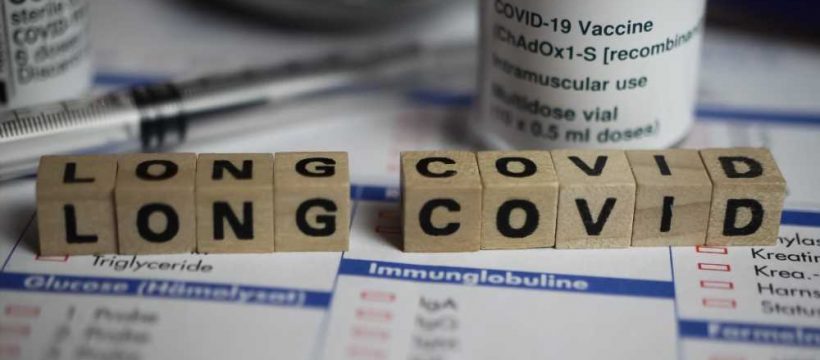In a recent study posted to the medRxiv* preprint server, researchers identified distinctive characteristics of post-acute sequelae of coronavirus disease 2019 (COVID-19) (PASC) via immune profiling.

Background
Recovery from virus infections is uneven, and some convalescent patients may continue to experience persistent symptoms. The severe acute respiratory syndrome coronavirus 2 (SARS-CoV-2) infection could lead to a cluster of persistent symptoms that appear after the acute phase called Long COVID, also known as PASC.
People diagnosed with PASC frequently experience post-exertional malaise, chronic fatigue, and a wide range of autonomic and cognitive dysfunctions. The prevalence estimates of Long COVID differ wildly. Nonetheless, even the most optimistic projections show that PASC imposes an immense burden on millions of individuals with enormous social, clinical, and economic repercussions, given the global extent of SARS-CoV-2 exposure.
Besides, it is unknown what fundamental biological processes are causing the debilitating long COVID symptoms. Persistent virus or viral residues, dysbiosis, latent autoimmunity, tissue damage brought on by prolonged inflammation, and virus reactivation are some of the current explanations for PASC mechanisms.
About the study
In the present cross-sectional, exploratory study involving 215 subjects, the researchers performed multidimensional immune phenotyping in tandem with machine learning techniques to pinpoint the underlying biological mechanisms of PASC. They aimed to determine the crucial immunological characteristics differentiating Long COVID.
The study was conducted at the Yale School of Medicine, New Haven, Connecticut. The 215 study volunteers were composed of four cohorts: 1) healthy, unvaccinated, priorly COVID-19-infected controls (Healthcare Workers or HCW); 2) healthy, uninfected controls (Healthy Controls or HC); 3) people with persistent symptoms after acute COVID-19 (Long COVID or LC); and 4) healthy, earlier COVID-19-infected controls without continuous symptoms (CC).
Among the CC, HCW, and LC cohorts, the recruited subjects were mainly not hospitalized during the acute phase of SARS-CoV-2 infection. Moreover, more than one year has passed after the initial COVID-19 incidence for participants in the LC and CC groups. Unbiased machine learning and multidimensional systematic immunophenotyping of collected data from each cohort were performed to find potential biomarkers of PASC.
Results
The current exploratory analyses revealed some vital immune variances in Long COVID patients compared to demographically matched control individuals at more than 400 days after SARS-CoV-2 infection. The authors found several substantial alterations in circulating leukocytes, including elevations in activated B cells, non-classical monocytes, double-negative B cells, exhausted T cells, and CD4 T cells secreting interleukin 6 (IL-6)/IL-4, and reductions in conventional dendritic cell 1 (DC1) and central memory CD4 T cells in the PASC group.
Furthermore, participants with PASC also had higher antibody titers against SARS-CoV-2 and herpesvirus lytic antigens. Human exoproteome autoantibodies, on the other hand, showed no discernible changes.
The plasma cortisol levels of subjects with Long COVID were particularly startling. Cortisol concentrations were nearly half that of healthy or convalescent controls and remained the same even after adjusting for individual demographic disparities and sample collection periods. According to machine learning, the most important predictor for PASC categorization and propensity score estimate was solely cortisol levels. Galectin-1 and IL-8 overexpression were other Long COVID diagnostic biomarkers.
Overall, the study results point to persistent antigen, latent herpesvirus reactivation, and chronic inflammation as contributing factors to PASC pathogenesis. Further, the results did not support the involvement of extracellular autoantibodies in Long COVID.
Conclusions
Collectively, the study findings indicated distinct variations in particular populations of circulating lymphocytes and myeloid cells compared to matched control cohorts and evidence of heightened humoral immunity against SARS-CoV-2 in people with PASC. Furthermore, unanticipated elevations in antibody responses against viral pathogens other than SARS-CoV-2, notably the Epstein-Barr virus (EBV), were noted.
Additionally, significant differences were observed during the evaluation of circulating immune mediators and different hormones, with cortisol levels consistently lower in people with PASC compared to matched control cohorts. Integrating immune phenotyping information into unbiased machine learning models discovered key distinguishing traits imperative in accurate PASC categorization. Indeed, reduced cortisol levels were the most significant specific Long COVID predictor.
Notably, the present study data will assist in directing future research on the pathobiology of PASC and could support the creation of objective Long COVID biomarkers.
*Important notice
medRxiv publishes preliminary scientific reports that are not peer-reviewed and, therefore, should not be regarded as conclusive, guide clinical practice/health-related behavior, or treated as established information.
- Jon Klein, Jamie Wood, Jillian Jaycox, et al. (2022). Distinguishing features of Long COVID identified through immune profiling. medRxiv. doi: https://doi.org/10.1101/2022.08.09.22278592 https://www.medrxiv.org/content/10.1101/2022.08.09.22278592v1
Posted in: Medical Science News | Medical Research News | Disease/Infection News
Tags: Antibody, Antigen, Autoantibodies, Autoimmunity, CD4, Cell, Chronic, Coronavirus, Coronavirus Disease COVID-19, Cortisol, covid-19, Dendritic Cell, Diagnostic, Dysbiosis, Epstein-Barr Virus, Fatigue, Healthcare, immunity, Immunophenotyping, Inflammation, Interleukin, Machine Learning, Medicine, Research, Respiratory, SARS, SARS-CoV-2, Severe Acute Respiratory, Severe Acute Respiratory Syndrome, Syndrome, Virus

Written by
Shanet Susan Alex
Shanet Susan Alex, a medical writer, based in Kerala, India, is a Doctor of Pharmacy graduate from Kerala University of Health Sciences. Her academic background is in clinical pharmacy and research, and she is passionate about medical writing. Shanet has published papers in the International Journal of Medical Science and Current Research (IJMSCR), the International Journal of Pharmacy (IJP), and the International Journal of Medical Science and Applied Research (IJMSAR). Apart from work, she enjoys listening to music and watching movies.
Source: Read Full Article
